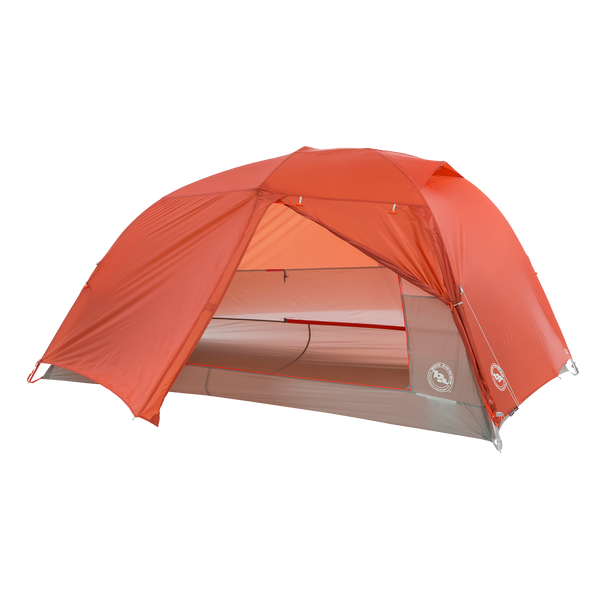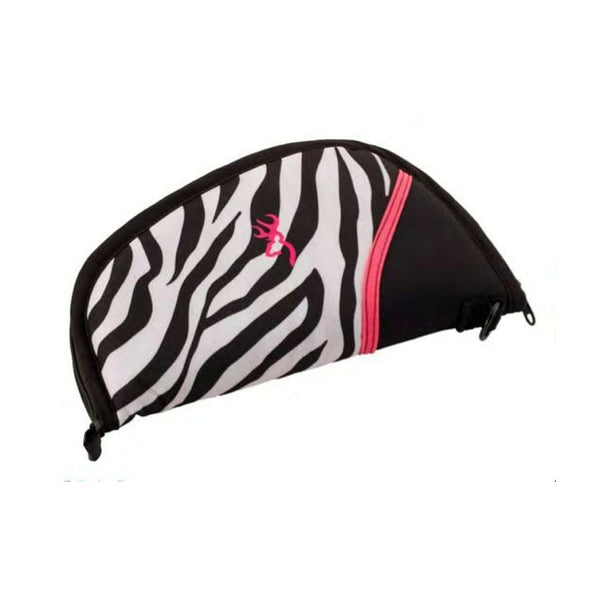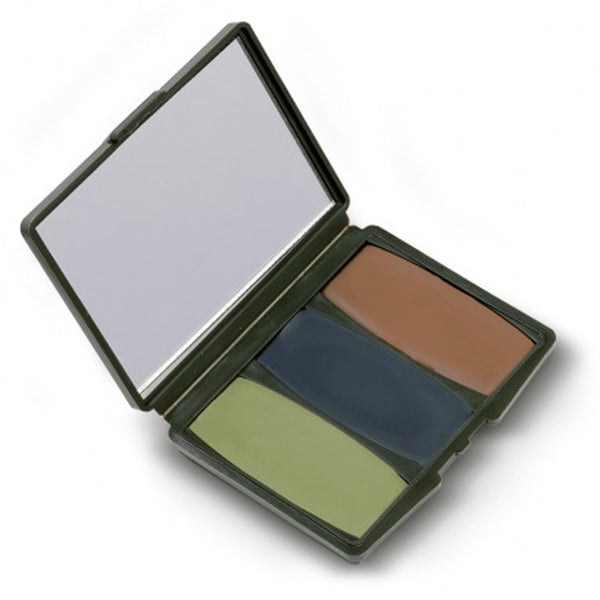What in the heck am I thinking? I must be crazy! Those were the exact thoughts that crossed my mind as I watched the trophy antelope put a half mile of sagebrush covered desert between him and I in a matter of seconds. Unfortunately, after several days of spot and stalk hunting, the sight of antelope disappearing over the ridge in a cloud of dust was becoming an all too familiar sight. This spot and stalk antelope gig was evidently going to be a little tougher than I had originally thought!
Granted, harvesting an antelope with my bow was my ultimate goal during the 2009 hunting season, but what mattered most, was the method in which I wanted to accomplish this goal. I was not going to use a blind, nor was I going to use a decoy, I simply wanted to harvest a P&Y antelope buck utilizing the most challenging possible method I could think of - spot and stalk. Although I felt that sitting on a waterhole or utilizing a decoy were both much easier ways to harvest one of these prairie goat speedsters, they simply didn’t appeal to me. Besides, I felt that spot and stalk hunting, although the most difficult, would give me the best chance at ultimately harvesting the P&Y class buck I was after.
To be perfectly honest, the thought of sitting on a waterhole all day every day waiting for an antelope to come visit doesn’t do much for me. Not only is it too slow paced, but you are pretty much at the mercy of whatever antelope happens to come in for a drink during the timeframe you happen to be there. In addition, the odds of a trophy class antelope coming in are very slim indeed. As far as decoying, anytime you can bring an animal into you rather than having to go to the animal, it greatly increases your odds of success. But once again, you are limited to whatever antelope just so happens to be enticed by your decoy and decides to approach within bow range. Spot and stalk hunting on the other hand not only sounded more challenging and exciting, but it also offered the following two distinct advantages:
Trophy Quality – Spot and stalk hunting truly gives you the best opportunity for a trophy class buck. Rather than being stationary all day, you are able to drive around and cover literally hundreds of square miles of terrain each day. Covering this much country allows you the opportunity to look over literally dozens, if not hundreds of bucks each day. Looking over this many antelope will greatly increase your odds of locating a trophy caliber buck.
Control – Spot and stalk hunting puts you in total control of the action. Not only do you get to pick and choose which buck you will attempt a stalk on, but you also get to choose when the action takes place. In addition, you also get to choose how many or how few stalks to attempt each day.
Armed with a positive attitude and a bundle of determination, I set out to accomplish my newfound goal. I must admit however, that after I had failed at my first six or so stalk attempts, I was a bit overwhelmed and the excitement was slowly turning into frustration. The wide-open flat desert floor that lay before me appeared void of any topography variation and I was convinced that is was going to be nearly impossible to stalk an antelope with the short sagebrush and lack of good cover. As I sat there, wracking my brain and pondering my next move, it came to me! Déjà vu all over again! A few years earlier when I began archery hunting mule deer above timberline, I remember experiencing the same exact feeling as I sat there looking at the wide alpine basin that seemed to be void of cover. Once I came to the realization that antelope hunting was going to be very similar to hunting timberline mulies – the game was on!
Glass, glass, glass
Obviously the first part of being successful in a spot and stalk endeavor is to spot your quarry. Just as in hunting high country mulies, you want to start by seeking out elevated points and ridges and putting your optics to work. This allows you to locate and size up bucks from a distance without spooking them. The only difference between muleys and antelope is the fact that antelope are very easy to spot and you don’t need to spend a lot of time in one spot. If you don’t see anything, move on. True quality bucks are extremely rare and the key here is to cover as much country as possible.
For antelope optics, I would recommend using a quality pair of 10x42 binoculars and a 60x spotting scope with at least a 65mm objective lens. In addition to a full sized tripod, I would also suggest investing in a small window mount tripod. Although they are not super sturdy, they can be setup very quickly without having to exit your vehicle.
Terrain
Do yourself a favor and seek out terrain that favors spot and stalk type hunting. This is one of the best ways to increase your odds of success. It doesn’t matter whether I am hunting an alpine basin above timberline, or a sagebrush covered desert, I prefer to hunt broken terrain that varies in topographical features as well as elevation. In antelope country, I would recommend seeking out small roaming hills that have occasional deep valleys and numerous deep ravines. The larger ravines provide great concealment when attempting a stalk on flatter terrain.
If your antelope area doesn’t have much variance in terrain and you are pretty much forced to hunt flatter terrain, all is not lost. At first glance, when you initially look at this type of terrain, it appears extremely flat and void of any topographical features that could possibly assist in stalking in close to a trophy antelope. This is where utilizing your optics is very important. A lot of guys think that once they have their quarry located, they can put the optics away. Don’t make this mistake. Continue to use your optics to evaluate the terrain surrounding the buck you will be stalking. Often times, by scrutinizing the lay of the land with your binoculars can help identify ravines, washes, taller sagebrush and small ridges that can be used as cover during a stalk attempt.
Attempt Numerous Stalks
“If at first you don’t succeed, try and try again.” I love that old saying and whoever coined it was obviously an archer who had attempted to spot and stalk an antelope or two in his career. No matter how good you are at stalking, if you plan to be successful at spot and stalk antelope hunting, you need to attempt numerous stalks. The fact that they have great vision, hang out in large herds and live in very open terrain, allow them to detect approaching hunters more often than not which results in a very high percentage of failed stalks.
When I first began archery hunting mule deer a few years ago, I felt that every stalk needed to have perfect stalking conditions before I would attempt a stalk. Because perfect conditions very rarely ever occur, that mentality resulted in very few stalks and no kills. I am not suggesting that you attempt stalks that have zero chance of success because of wind, terrain, etc, but what I am saying is that you shouldn’t be afraid to attempt a stalk that has a reasonable chance of succeeding. During 2009, I attempted nearly two dozen stalks over the course of the season on numerous trophy bucks. On the buck I eventually harvested, it took me three stalks to finally get the job done. Don’t be afraid of blowing stalk after stalk. Simply put, the more stalks attempted, the higher your chances of success.
Stalk from Above
If someone was to ask me my advice on stalking high country mulies, my number one tip would be to approach your stalk from above the animal. After this past antelope season, I would offer this same advice for antelope hunting. I used this exact technique to harvest my P&Y antelope buck. I located the buck late in the afternoon and attempted two failed stalks but vowed to return the next day.
At first light I relocated the buck in the exact same spot I had put him to bed in the evening before. He was still accompanied by the same three antelope that he was with the evening before. Long story short, I was able to stalk to a ridge top that allowed me to look down on the small group of antelope as they fed on an old oilfield pipeline right-of-way. I ranged them at distance of 70 yards, but because antelope vitals are so small, I wanted to close the gap another twenty yards. There was nothing but short sagebrush between the antelope and I as I inched forward. The antelope spent the majority of their time looking downhill to the road located in the valley below. When all four antelope would look downhill, I would slowly inch closer. During the time it took me to cover the twenty yards, only one of the antelope looked in my direction uphill.
Conclusion
I literally looked over hundreds of bucks of all shapes and sizes, attempted numerous stalks and when the dust settled, I was able put my tag on a buck that will score very high in the P&Y record book. Not only was I lucky enough to harvest a great P&Y class buck, but I was able to arrow the largest antelope I laid eyes on during the entire season. I will say this, after spending this past season pursuing these amazing speed goats, they are one of the most underrated animals to spot and stalk. If you find that you get frustrated and discouraged easily, I will be blunt, spot and stalk antelope is probably not for you. At times, you will actually find yourself questioning your own sanity for taking on such an improbable task. But if you are the type of person who does not give up easy and enjoys a true challenge, I would highly recommend giving it a shot. Because trust me, when the stars in the universe finally align and it all comes together, there is an unmatched sense of satisfaction that cannot be explained, only experienced.

SPOT 'N STALK ANTELOPE by David Long
You may also like
View all
#thisismyhighcountry
Find your High Country
Spend time in the places you love the most. Good gear, means you can spend more time there.
Let us help you make the most of your time in the mountains.
text us: 307.242.1477
Let us help you make the most of your time in the mountains.









: invalid url input -->)






Leave a comment